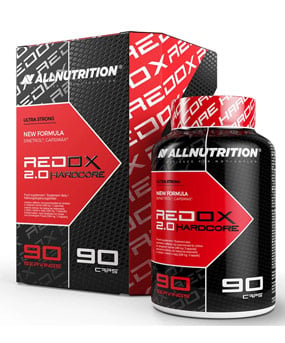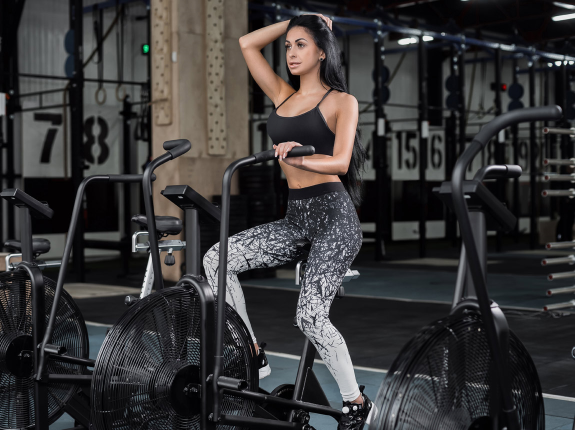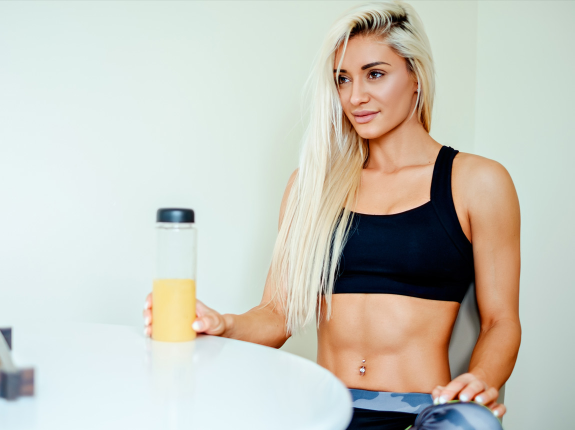Confessions of a Former Women's Magazine Writer
Writing about "hot" nutrition topics still has impact. During the decade or so that I wrote for women's magazines, I received much positive feedback from readers.
In 1989, at the height of oat bran's popularity as a panacea to lower cholesterol, the president and chief operating officer of a leading cereal manufacturer estimated that sales of oat-bran cereals would grow to nearly $600 million annually. I wrote five oat-bran stories that year for various women's magazines. A year later, when a study called oat bran's health-promoting properties into question, sales plummeted 50% within a week; at that point, I couldn't give away an article on oat bran.
I also covered other "hot" nutrition topics. But although they appeared on the nutrition page, these articles tended to be either "food-of-the-month" stories (the grapefruit diet, carrot power) or quasi-entertainment pieces that positioned foods as medicine: to fight cancer, strengthen the immune system, lower blood pressure, cut cholesterol, stave off heart attacks, prevent osteoporosis, reduce stress, or improve your sex life.
Earning a living this way was quick, easy, and -- for a while at least -- fun. I readily recycled material from publication to publication, since all were prone to hopping on the same bandwagons. And editors who saw my work in one magazine often asked me to "do a story like this for our audience." It never dawned on me that I might be misleading the public by promoting "food-as-magic-bullet" mythology. I labored under the illusion that by carefully executing assignments according to the editors' parameters, I was informing the public and being a good writer.
What I was really doing was helping to sell magazines by presenting a lopsided point of view: the world according to women's magazine editors. Their world (and my assignments) was shaped primarily by two considerations: providing a "nice environment" for advertisers and making sure readers were not challenged by anything more than simple tips for healthy living. (The word healthful does not exist in women's magazine stylesheets.)
Elizabeth Whelan, Sc.D., M.P.H., president of the American Council on Science and Health, has repeatedly accused women's magazines of shirking responsibility by focusing on trivia and ignoring the devastating effects of cigarette smoking. In the early 1990s, for example, in an op-ed piece in The New York Times, she said:
What advice do the magazines offer on how to stay healthy? Here is a sampling: Eat lots of broccoli to ward off cancer . . . take vitamins E and C and beta-carotene; eat garlic to fight colds and flu . . . and eat active-culture yogurt to live longer.
Conflicting views are seldom presented in women's magazines. After all, the "logic" goes, readers might become confused if they actually have to weigh more than one side of a story. Instead, editors usually decide in advance what readers should think, infantilizing readers in the process. This condescending philosophy was a major reason why I decided to get out of the whole business and into writing for physicians. Today, a decade after making the transition, I still savor the fact that I am writing for grown-ups.
How Articles Evolve
One reason why trivial and/or incorrect nutrition advice appear so often is the desire to please the magazines' lifeline: advertisers. Most marketing executives view women's magazines as "products" or "vehicles" that are part of a "marketing package" for their wares. That's where the "nice environment" comes in. Before agreeing to buy space, advertisers want to know what kinds of articles will appear in the magazine -- and, particularly, what copy will appear near the ad. "Negative" stories -- topics that may upset readers or otherwise interfere with a "feel-good" atmosphere -- are routinely rejected. Unfortunately, this means that manuscripts that tell the truth (for example, that the link between specific foods and specific health effects is largely hype) seldom get published.
"Women's magazines are controlled by advertisers in ways that other magazines aren't," Ms. co-founder Gloria Steinem told a gathering of writers from the American Society of Journalists and Authors in 1991. She described how women's magazines began as catalogs, with short stories woven in between the ads. The link between advertising and editorial has remained, she said, creating a situation wherein "85% of women's magazine copy is really 'unmarked advertorial.'" A few months later, co-founder Patricia Carbine talked about "Advertising and Editorial -- The Uneasy Coexistence" to a group of advertising, marketing, and public relations professionals attending a forum on business ethics. "Advertisers are insisting on concessions from women's service magazines that they wouldn't insist on from Time or Newsweek," she said. According to Ms. Carbine, declining circulation has put even greater pressure on women's publications to continually cross the line between advertising and editorial. Examples include presenting a certain number of recipes that use soup as an ingredient to satisfy a soup advertiser, or refusing to run results of "taste tests" that could offend an advertiser whose product appears at the bottom of the heap.
When I wrote regular nutrition columns for women's magazines, my topics were determined in most cases by advertisements already commissioned or those the publication hoped to bring in. "[A major cereal manufacturer] is advertising in September. Why don't you do a fiber story for that issue?" one editor suggested. "We'd love to get an ad from [a leading manufacturer of lowfat dairy products]. We want you to do a story on foods that are low in fat and high in calcium," said another.
Michael Hoyt, associate editor of Columbia Journalism Review, has expressed concern about the blurred boundaries between advertising and editorial content. In the March/April 1990 issue, in an article called "When The Walls Come Tumbling Down," he stated:
From a reader's perspective this confluence of advertising and editorial is confusing: Where does the sales pitch end? Where does the editor take over? ... Magazines of all stripes are suddenly competing to give advertisers something extra -- "value added" in ad-world lingo -- in return for their business. Many of these extras are perfectly legitimate and have little or nothing to do with editorial content; others fall into a gray and foggy area; still others involve the selling of pieces of editorial integrity, from slivers to chunks to truckloads.
When it comes to nutrition information, the "confusion" Hoyt alludes to is rampant. In a recent interview (not for a women's magazine), Richard Rivlin, M.D., of New York Hospital told me: "The public is enormously confused. They need a better understanding of the role nutrition plays with respect to disease. We haven't been doing a very good job of putting things in perspective." Writing in the Journal of the American Medical Association, Dr. Rivlin stressed that it is more realistic to think that good nutrition can help delay the onset or reduce the effects of such illnesses as heart disease, stroke, cancer, and diabetes -- not that nutrition can prevent or eliminate these disorders entirely. He added that proper nutrition won't do much to protect an individual who continues to smoke cigarettes, drinks excessively, or leads a sedentary lifestyle.
But that type of moderate message seldom makes its way into magazines where "food as medicine" themes are regarded as an essential editorial ingredient. During my tenure as a health and nutrition writer, I wrote everything from the "diet that can save your life" to the "fertility diet" and the "brain power diet." I also wrote about diets to calm your kids, boost their I.Q., and keep them from becoming overweight adults.
The Ingredients of a "Good" Nutrition Article
The other force that drives the editorial content of women's magazines is the desire to grab attention to boost sales. The quickest, surest way to sell article ideas to a women's magazine is to come up with a great cover line. Once I learned this secret, getting assignments was a snap. Whereas some writers labored long and hard over query letters, I would think up titles and bullet them on a page, fleshing out the "story" with one or two sentences. Examples include: "16 Great Food Finds," "20 Hunger-Fighting Foods," "6 Myths That Keep You Fat," and "What Your Snacks Say About You." At least 75% of the topics I proposed in this way ended up as assignments.
Of course, the process also worked in reverse. Editors would call me and say, "We want such-and-such story (naming a provocative headline). You figure out what to put in the article." Although all this smacks of deception, I did have scruples. Despite the jazzy-sounding titles, in most instances I merely repackaged basic nutrition advice into my articles, slipping in qualifiers ("there's no proof as yet") for spurious speculations and liberally peppering my articles with "may" and "they speculate." Does this excuse me? Not really. What astounds me in retrospect is how many "experts" were willing to go along with this charade.
Another essential ingredient in good articles is the voice of authority. As a women's magazine writer, I needed "experts" to validate my editor's point of view. Many "experts" who regularly appear in women's magazines are willing to trade scientific credibility for the opportunity to have their name in print. Some would give me quotes even when the premise of a story made little sense. For example, one women's magazine editor asked me to do a feature article called "Ten Foods to Make You Prettier." I balked, saying that unless an "expert" would corroborate that such a story could include some substance, I wouldn't do it. I was given the name of an "authority" at the school of public health of a major university. She convinced me it could be done and provided me with additional sources. I not only wrote the article but recycled it to other women's publications under such titles as "Eat Your Way to Perfect Skin" and "Beauty Is More Than Skin Deep."
Some "experts" I had quoted once were only too pleased to appear in subsequent articles -- but not just the spin-offs. In some cases, they "trusted me" to put quotes in their mouths without even doing another interview or clearing the information with them. At one point, I had a psychiatrist, a psychologist, several nutritionists, an eating disorder specialist, and a dietitian that I could pull out of my hat (by making up quotes based on past interviews) whenever an editor wanted a particular viewpoint point substantiated. In other words, I had "instant sources."
I won't speculate on the reasons why people with M.D.s and Ph.D.s (the ones most coveted as sources by women's magazines), who presumably know better, permit themselves to be used in that way. The fact is, many do. Of course, not all have been manipulated. But I'll bet that most are not challenged, either by the writer who interviews them or by others who are quoted.
"Hiring" of Writers
A little-publicized, unethical practice that is more common than writers would like to admit can directly affect what "expert" information gets into a women's magazine and what doesn't. On several occasions, people from public relations agencies representing weight-loss centers and other clients have called me with a proposition. They would "hire" me to write a nutrition story that quoted their client if I would "place" it in a women's magazine. For an unscrupulous writer, this is an opportunity to be paid twice for the same article. I have consistently refused such work, telling callers that if their client's views were appropriate for something I am writing, they would be used without charge.
In another typical women's magazine scenario, the writer is required to skip attribution altogether -- the rationale being that "we want the magazine to be the authority." The result of this abuse of power is that the magazine gives itself a free hand to say whatever it wants, merely by having the writer pepper the article with convenient phrases such as "experts agree," "scientists have found," and "experts say." What experts? The writer and editor, of course.
Style over Substance
Another practice that makes it easier for writers to write for women's magazines than for many other publications -- and that has the potential of leaving readers seriously misinformed -- is lack of fact-checking. Although some women's magazines call sources to check quotes for accuracy and require writers to provide backup material for statistics, many (I would venture to guess most) don't. I wrote weekly nutrition columns for one women's magazine that preferred to be the authority (in other words, no experts were to be quoted). In more than a year and a half, no one on the magazine's staff ever asked where I got my information. Each column was composed of an article that provided a good headline, a Q&A that I had made up (including a name and city for the supposed writer), and a "fast fact" pertaining to nutrition (for example, that 40% of consumers eat vanilla ice cream). No one ever asked where my "fast facts" came from.[Editor's note: Fact-checking can improve accuracy, but does not guarantee it. When checkers limit their contact to people mentioned in the article, errors originating from inaccurate or misleading sources may go undetected. The only way to ensure accuracy is expert prepublication review -- a process few media o*****s utilize.]
In addition to a catchy headline and good sources, the article must "lay out well" on the page. Typically this means using sidebars and boxes, with cute little quizzes ("What's Your Nutrition IQ?"; "Are You An Emotional Eater?"), fascinating facts ("Did You Know..."), or 2-day "starter menus" for special diet stories. It's a plus if the article itself can be done up in an easy-to-swallow format, such as "Your A-Z Guide To Fighting Fat," "Seven Secrets Every Thin Person Knows," or "Nutrition Myths That Keep You Fat." Editors seem to assume that straightforward stories won't be read, that readers must be entertained, and that "text-heavy" pages will intimidate them.
The women's magazine writer must also understand an editor's mandate to "work with the art director." In many cases, this means the writer must include points in the text to validate the accompanying photos. For example, if the art director thinks a story on summer fruit would "look great" accompanied by a photo of bananas, grapefruit, and kiwi fruit, then the writer must make sure these fruits are mentioned in the article. Sometimes the photography is planned or even executed before the article is written.
The power of the art director was carried ad absurdum in one article I wrote on eating "mini-meals." I had paid a registered dietitian to plan meals that would meet all the Recommended Dietary Allowances for adult women. Imagine my shock when my editor called to demand that a meal be changed to include the foods that the art director thought would "look good on the page." "Luscious strawberries" and "juicy orange slices" would have to replace raisins and bananas!
The final ingredient in a "good" nutrition story is the writing style. Three tones are permitted:
• Bouncy two-year-old: "Don't wait! Start now on our power-packed, energy-boosting diet."
• Concerned parent: "Eclairs are tempting, so have one -- very occasionally . . . If you do have one, make it your only indulgence that day"; "If you must use white sauce, remember: the thinner the sauce, the thinner you'll stay."
• Pseudosophisticated "friend": "Of course you can diet and lose weight. You've done it before . . . and before that . . . but each time the pounds you shed creep back, causing you to groan with disappointment when you step on the scale. Yet we all know women whose weight rarely fluctuates more than a pound or two and former fatties who managed to lose weight and keep it off for good . . . Now, we bring you the real secrets behind their success."
Once a writer has these chatty tones down pat, she simply asks which style the editor wants, and bingo! Another successful assignment!
No Journalistic Skills Required
What probably helped me most in becoming a successful women's magazine writer was the fact that I had no journalism training whatsoever. I have never taken a writing course in my life.
In 1980, I went into business for myself as a freelance public relations person for various agencies in New York City. The skills I acquired made it easy to shift from press kits into women's magazine writing. These included: (1) the ability to write headlines and opening paragraphs that were punchy and attention-grabbing; (2) an unquestioning attitude towards "experts"; and (3) the ability to produce unfailingly upbeat, inoffensive copy.
Writing press kits for new diet pills, migraine medicines, and blood pressure drugs, for example, required me digest complex information and spew it back in easy-to-swallow, bite-size pieces, rarely using words of more than one syllable and remaining as one-dimensional as possible (sound familiar?). Snappy headlines and subheads were more important than hard information -- after all, my primary responsibility was to help ensure that our material wasn't hurled immediately into the "circular file."
I made my first women's magazine contacts when pitching editors with story ideas that would include whatever clients I happened to be handling at the time. If the editors wanted more, I would send a press kit or bulleted list of article ideas that could be built around the client. Some of the "low-end" women's magazines willingly take articles provided by public relations firms, which I promptly produced for them. Several even gave me bylines -- a joy to someone starting out in the field.
These assignments, paid for by the public relations agencies I worked for, provided me with "clips" which I then used to approach larger publications. Soon editors of women's magazines were asking me to write for them on assignment. Within a year, I had so much magazine work that I stopped doing public relations work altogether.
After a number of years playing at this kind of writing, I grew incredibly bored. Women's magazines like to pigeonhole writers (e.g., "health writer," "travel writer," "money writer"). Even though I managed somewhat to defy definition by writing in all three of these categories, editors who gave me "regular work" really wanted me to write the same stories issue after issue, year after year: How to shed five pounds in five days; Think yourself thin; De-stress yourself; Eat right over the holidays; Get in shape for summer; How to stick to your diet while eating out; Why your food diary is your best friend, etc, etc. These are women's magazine "staples" -- the stories readers presumably want to read over and over.
Perhaps it's true. Maybe all those women out there really do want to read that stuff. But if that's the case, at least I have the satisfaction of knowing I no longer contribute to the propaganda that feeds such a mindset. And I can't help but believe that women's magazine readers are capable of taking in a healthy dose of hard information, meaningful speculation, and controversy -- about food, nutrition, health, life -- if their favorite magazines would only make the effort, and take the risk, of presenting them.
This article is based on my experiences in writing for more than a dozen women's magazines and talking with fellow journalists. There is no question that some women's magazines have more editorial "depth" than others. Those that cater to "educated" women generally offer less simplistic-sounding articles than those catering to "the secretary in Middle America." And magazines with bigger editorial budgets are apt to subject articles to more scrutiny than those with small budgets and little money for editorial content. Nevertheless, all operate under pressure from the market forces I have described.





 Krzysztof Piekarz
Krzysztof Piekarz


 przemianujemy się (dział) na the X-Files hrhr
przemianujemy się (dział) na the X-Files hrhr 






